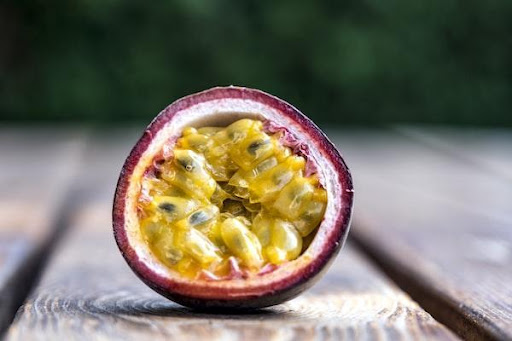Passion fruit (Passiflora edulis) is a hardy vine that requires full sun and grows up to 20 feet long if given the right conditions. Passion fruit vines are easy to propagate from cuttings taken from the tips of healthy vines in late spring or early summer. If you’re eager to learn how to grow Passion fruit, keep reading this guide to find out.
Choose the right seeds.
Passion fruit is a fruit that is widely enjoyed for its sweet, acidic, and tropical flavor, as well as its mild floral notes. There are two main types of passion fruit—yellow passion fruit and purple passion fruit. Both flavors are reminiscent of guava, but purple passion fruit is richer than yellow passion fruit and less acidic. Both types of passion fruit are enjoyed for their sweet, tropical flavor and the mild floral notes they add to dishes. So if you’re looking for a particular flavor profile, consider that before purchasing your seeds.
Choose a sunny spot in your garden.
When selecting a spot to grow your passion fruit vine, choose an area with full sunlight. Passion fruit needs a lot of sunlight because it’s a vine plant. Vines will grow up on any surface they can find, so they need a lot of direct sunlight to grow strong and healthy. Overall, the vine requires at least six hours of direct sunlight daily and a temperature between 68 degrees and 75 degrees Fahrenheit. If no spot in your garden gets full sun all day long, you can try growing the vine on a trellis or arbor. Make sure you grow your passion fruit in a frost-free zone.
Fertilize your vine regularly.
Try to make sure you fertilize your passion fruit vine regularly with a balanced fertilizer to ensure good growth and prolific fruit production. Passion fruit vines require nitrogen, phosphorus, and potassium to thrive. In addition, they also need plenty of zinc, magnesium, and iron. A good fertilizer will provide all of these nutrients in the correct proportions. Apply the fertilizer according to the instructions on the package for best results.
Plant the vine in well-draining soil.
The best way to grow passion fruit is by planting the vine in well-draining soil. If the soil is too wet, the vine will experience root rot, which can ultimately kill the plant. Well-draining soil will help keep the vine’s roots dry, which will help prevent this from happening. If your soil does not drain well, you can improve drainage by adding organic matter such as compost or peat moss. You can also plant passion fruit in a container filled with a potting mix that drains and gutter well. Make sure the soil pH is between 5.5 to 6.5.
Water your passion fruit.
Water your passion fruit plant regularly during the growing season, keeping the soil moist but not wet. You can do this by watering the plant regularly or planting it in a location that receives regular rainfall. When the plant is dormant in the winter, you can water it only occasionally. If the weather is dry, you may need to water it once a month. Passion fruit plants do not like over-watered, so ensure the soil is dry to the touch before watering again. Keep in mind that passion fruit plants grown in containers may need to be watered more often and kept in more humid conditions than plants grown in the ground.
Extract the juice from the fruit and enjoy.
Passion fruits typically take around eight months to ripen fully; however, you can still eat them once they start to turn yellow. Passion fruit is a good source of dietary fiber, vitamin C, and vitamin A. Passion fruit contains both soluble and insoluble fiber, which can help promote regularity and digestion. It’s also versatile fruit that can be added to smoothies, yogurt, or cereal. To extract the juice from the passion fruit, cut it in half and use a spoon to scoop out the insides.
Knowing how to grow their own passion fruit plants from scratch can elevate your gardening and snacking game. These tips are helpful for people who want to have their own supply of passion fruit that will grow in healthy abundance.

